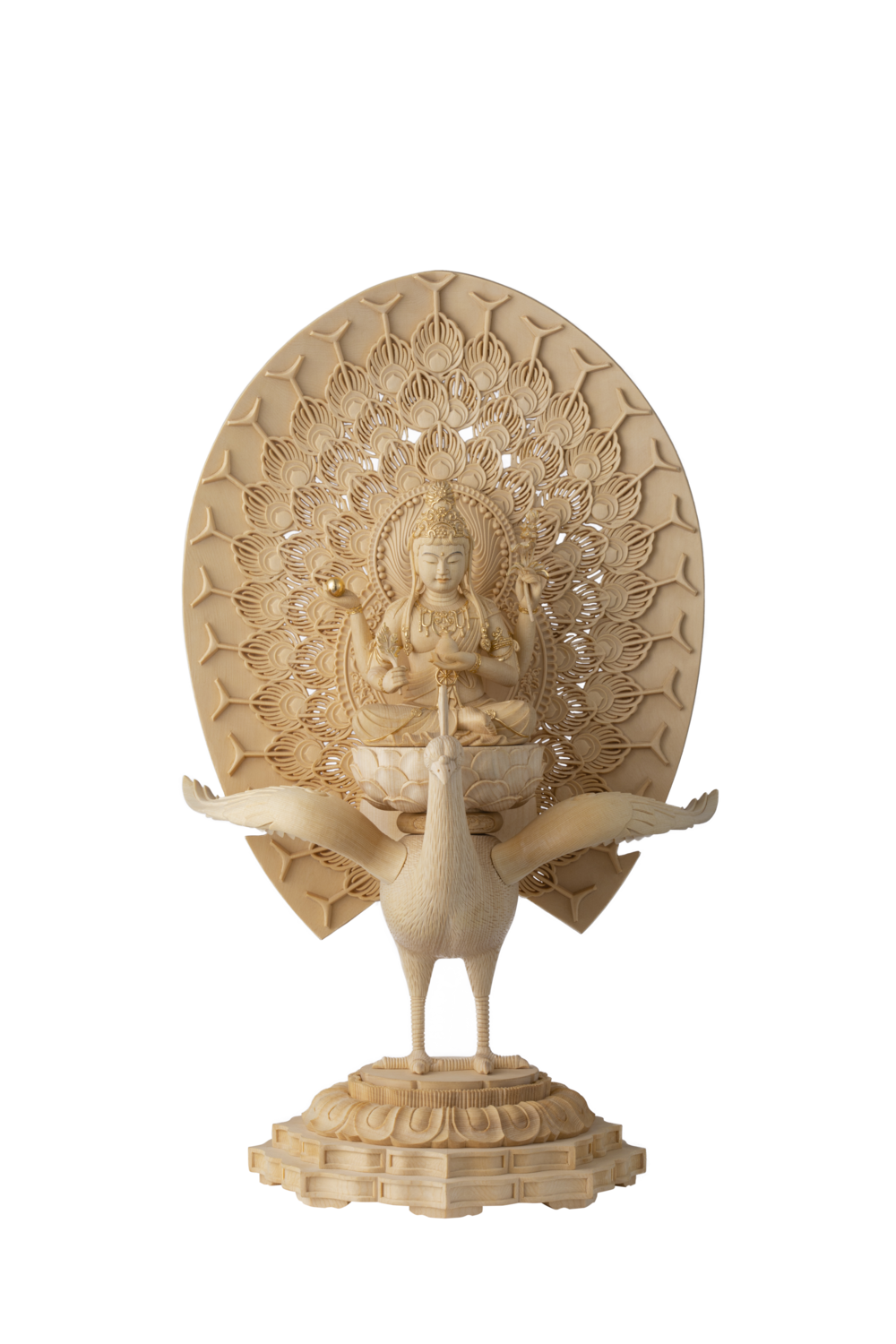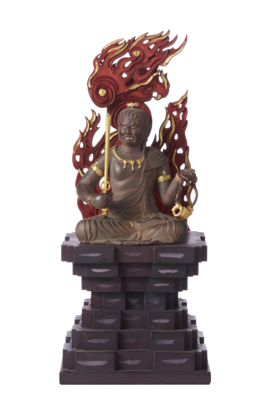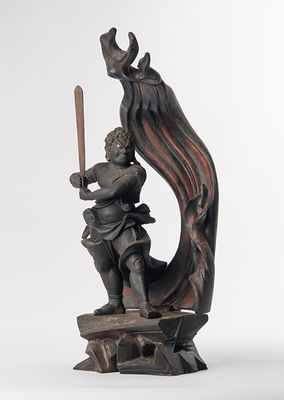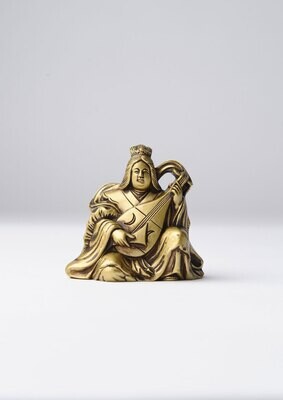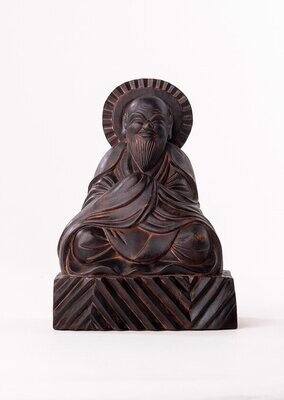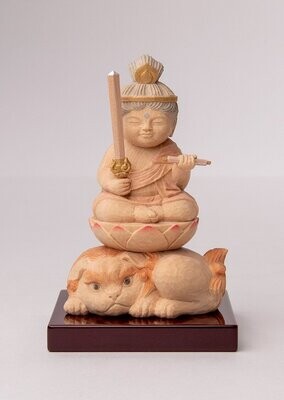Kujaku Myoo (Mahamayuri) (孔雀明王)
Based on an Indian goddess, she is said to be a peacock, which eats pests and poisonous snakes such as cobras, that has finally taken the form of a goddess. With those characteristics, she holds the power to remove disaster and pain from people's lives and has been adopted as a mantra against evil spirits. Among the many Wisdom Kings that have angry expressions, Mahamayuri has a benevolent expression, and it said that she is prayed to by everyone in the event of natural disasters.
Kujaku Myo-o is one of the important guardian deities in Esoteric Buddhism, particularly revered in Japanese Esoteric Buddhism. Kujaku Myo-o holds a prominent place in sects like Tendai and Shingon, where he is venerated as a powerful protector through his distinctive posture and various symbols.
The name Kujaku Myo-o is derived from his distinctive posture. He is typically depicted as a deity with the vibrant feathers of a peacock, symbolizing the purification of defilements and impurities in Buddhism. Kujaku Myo-o has three eyes and six arms, with one of his hands holding the symbolic object of Buddhist teachings, the Dharma wheel.
Kujaku Myo-o is worshipped as a guardian deity who dispels evil spirits and obstacles, offering protection to believers. Furthermore, he symbolizes wisdom and enlightenment, often regarded as an entity that brings spiritual revelations to practitioners.
His worship is particularly significant in the practices of ascetics and monks in Esoteric Buddhism. Secret mantras and specific rituals dedicated to Kujaku Myo-o are employed for spiritual purification and guidance. Through these rituals and prayers, believers are believed to cleanse themselves of worldly attachments and receive support in their spiritual growth and pursuit of enlightenment.
In summary, Kujaku Myo-o is a revered guardian deity in Japanese Esoteric Buddhism. His iconic posture and profound symbolism represent spiritual guidance and protection for believers.
- Size: H44×W24×D18 (cm), 900g
- Material: Hinoki (桧)
- Made in China
- You can choose the option to consecrate this statue (give an eye-opening ceremony) before it is shipped from Japan. If you choose this option, we will bring the statue to a Japanese temple, and pay them the necessary fees so that your statue is properly consecrated. The temple will issue a certificate of proof with your name on it, which will also be shipped together with your statue
- Shipped globally from Japan by using DHL. DHL is the world-class shipping services provider who makes international delivery a fast, smooth, and hassle-free experience. Delivery time can be faster than when shopping at an e-commerce website in your country, and of course your package will be covered by insurance. You can check the shipping cost for your entire order before you make a purchase
